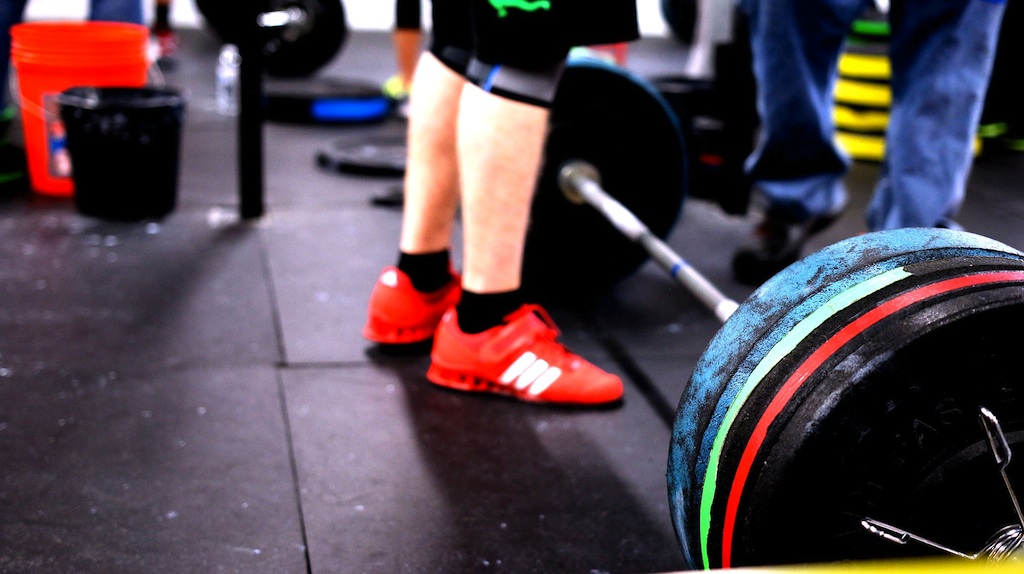All this month we’re talking about training volume.
What is the ideal amount of work you need to do to get optimally fit? This topic comes up all the time.
- Do I need to do extra work?
- Should I do a squat cycle?
- Should I follow a competitor program?
- Do I need to do extra “core” work?
- We didn’t work ___ today. Should I get some in?
- I didn’t feel sore the next day.
I appreciate that all of these questions are rooted in a genuine desire to get better. Unfortunately, they also tend to lead to negative results.
So, how much work do you need to do? The answer is super simple, yet highly complex:
The amount of work you need to do is the amount of work from which you can fully recover before your next training session.
At its core, exercise is simply Stimulus -> Response -> Adaptation. Stimulus is the work you do. Response is your body’s acute recovery mechanism – how well can you recover immediately after training? Adaptation is your body’s long-term adjustment to work.
To provide a concrete example:
Today I will run 1 mile (Stimulus). Since it is the first time I’ve ever run 1 mile, my body will have some acute soreness, additional caloric needs, and require some additional rest and sleep as a result of the new work I’ve asked of my body (Response). Let’s say I do this twice a week. After a few weeks, 1 mile will be no big deal. I’ll probably be able to ramp it up to 2 miles within a month (Adaptation).
We’ve written plenty on Stimulus and Adaptation, but our focus this month is on Response. I’ll harken back to my high school wood shop teacher for this one. He always used to say that – when you properly join two boards – the joint becomes stronger than the two boards being joined.
The same is true for training. When you work out, you’re actually damaging your body – you’re applying stress to your joints, tendons, metabolic processes, cardiovascular system, and muscle tissues. So, you could reasonably say that the physical act of working out is bad for your body. Working out becomes good for your body at the point that your tissues and systems RECOVER from that workout.
In the example of high school wood shop, the joint becomes strong once the glue fully dries. Try to manipulate your joined board with wet glue and you’ll have a broken board and a sticky mess everywhere.
So how much work do I need to do?
This is tricky but, speaking in broad strokes, an hour training session 3-5 times a week is just about right for most people. If you’re an elite athlete you’ll be able to manage 10-15 hours of weekly training. How can you tell if you’re an elite athlete? Here’s a pretty easy tell: You’ve lived at least 1 year on a salary or sponsorships that you’ve earned directly as a result of your athletic performance (sorry to burst your bubble).
This is not to say that some small bits of extra work here and there couldn’t benefit you and wouldn’t be a fun addition. But, before you go adding in work, ask yourself if you’re currently able to “pay the piper” with what that extra work will require of you. I’ve created a checklist to ensure that you’d actually benefit from extra work. Chances are, if you’re not able to check each box, you’ll experience a decreased level of fitness as a result of increased work.
- I eat at restaurants less than 3 times per week (sorry…Chipotle is still a restaurant).
- I’m a man that consumes 5 or less alcoholic drinks per week
- I’m a woman that consumes 3 or less alcoholic drinks per week
- I eat 7-9 cups of vegetables every day (for 6+ months…those 3 weeks you had it together don’t count)
- I drink my body weight in ounces of water daily and monitor my water loss during training sessions
- I sleep at least 7 uninterrupted hours every night
- I’m not experiencing Delayed Onset Muscle Soreness (DOMS) with increased training volume
Hopefully this provides a decent self-assessment for adding in extra work to your current training plan. If you’re struggling to see results and “gainz”, the chances of you needing to increase recovery are much higher than the chances that you need to increase your workload.

